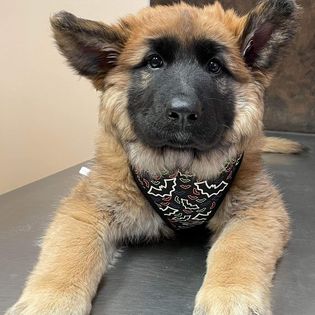
Foxtails
We want to shed some light on a common yet often overlooked issue that can affect our furry friends: foxtails. Foxtails are those pesky grass seed clusters that can cause a lot of trouble for our pets, particularly dogs. It’s essential to be aware of their presence and take necessary precautions to keep our beloved companions safe.
Where are Foxtails found?
Foxtails can be found in various grassy areas such as parks, hiking trails, and even in our own backyards. They have barbed structures that allow them to stick to fur, feathers, or clothing and work their way into our pets’ bodies. The most vulnerable areas are the paws, ears, eyes, nose, and lungs.
Foxtails, also known as grass awns or “spear grass” gets its name from their bushy, fox-like appearance when the seeds mature and spread.
Health Risks for your Pets
These seemingly harmless grass seed clusters can cause a range of problems for our pets. Foxtails may look innocuous, but their barbed structures allow them to easily attach to your pets, and can lead to significant health hazards for our furry companions.
- Skin Problems: Foxtails can work their way into your pets skin, causing painful abscesses, infections, and swelling. Pets with thick fur or long hair are particularly susceptible to foxtails becoming deeply embedded and hard to spot.
- Ear Issues: Dogs and cats with floppy ears are at a higher risk of foxtail invasion. Foxtails can easily find their way into the ear canal, leading to irritation, pain, and even hearing loss if left untreated.
- Eye Irritation: When foxtails come into contact with a pet’s eye, they can cause severe irritation, redness, and discomfort. If not promptly removed, foxtails can lead to corneal ulcers or other eye infections.
- Respiratory and Digestive Problems: If a pet inhales or ingests foxtails, they can become lodged in the respiratory tract or digestive system. You will see signs like coughing, gagging, and they can potentially cause dangerous blockages.
- Internal Migration: In some unfortunate cases, foxtails can migrate to internal organs. Such as, the lungs or other body parts, leading to severe health complications that may require surgery.
Preventing Foxtail Problems
To protect your pet from foxtails, here are a few precautions to keep in mind:
-Regularly inspect your pet’s fur, especially after outdoor activities.
-Pay close attention to the paws, ears, nose, and eyes, as these are the most vulnerable areas that you can see.
-Brush your pet’s coat regularly to remove any foxtails that might have gotten stuck. Foxtails can be hidden deep within the fur, so make sure you brush thoroughly.
-If you notice any signs of discomfort, such as excessive scratching, sneezing, coughing, or pawing at the face, consult us immediately. Early detection is crucial in preventing complications.
-Avoid walking your pet in areas with long grass or known foxtail infestations, particularly during the peak season when they are most prevalent.
Remember, prevention is always better than cure when it comes to foxtails!










